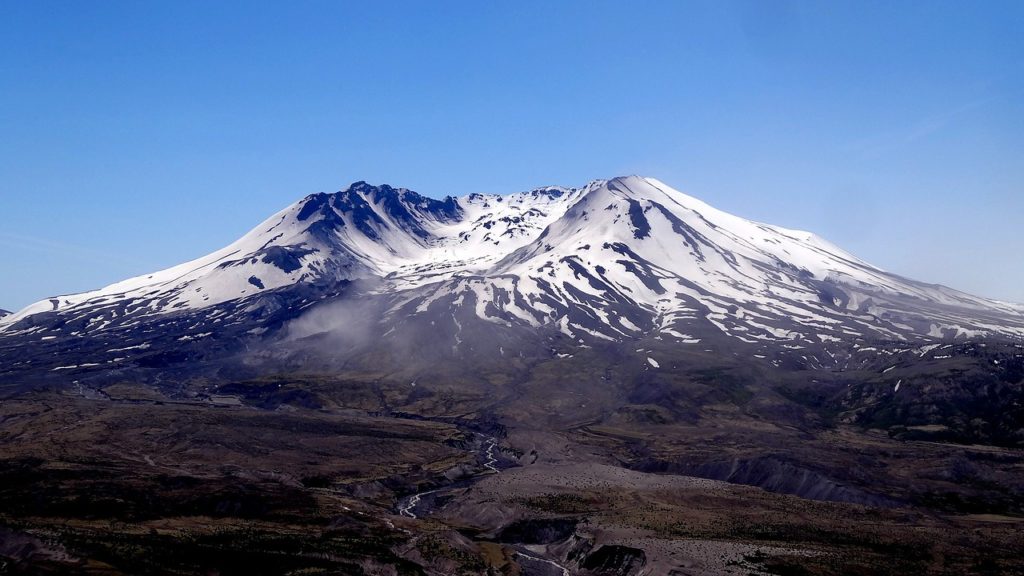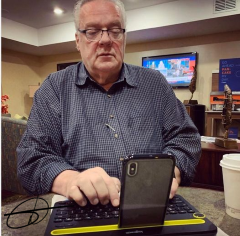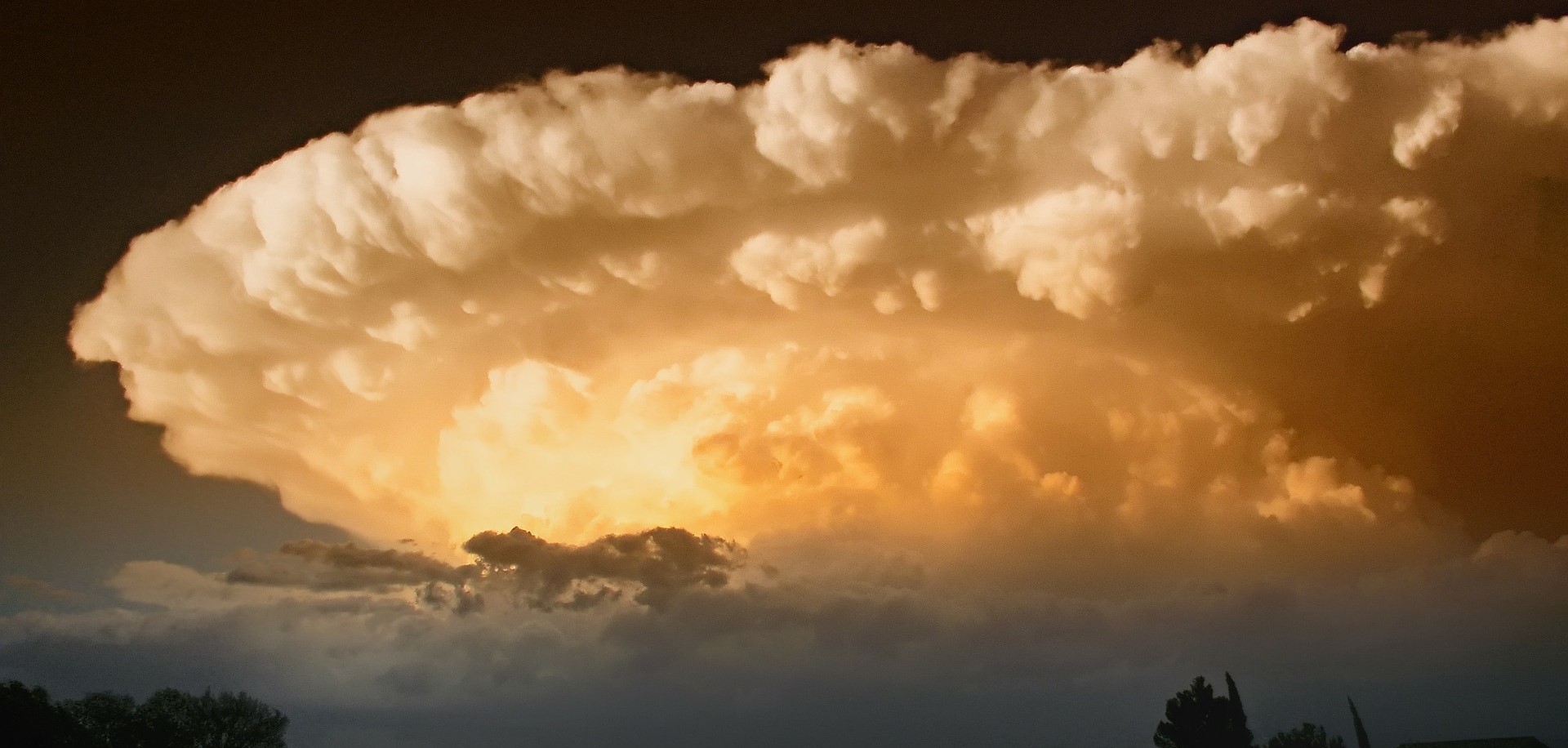Have you ever looked to the skies, watched the approaching storm, and anticipate the damage that will happen as it passes through?
As a kid in Texas, every so often a “blue norther” would show up. The skies would be fierce looking, dark and mysterious, and we knew a storm was about to hit. We would climb the trees by the road, and start riding the bucking broncs of branches as the winds swirled and shrieked.
Mom would make us come down only after we see lightening! Though the rain was a thick curtain-like wall of water falling from the skies, we stayed outside until the really dangerous weather arrived!
But afterward? The ditches filled with water from the deluge. Perhaps branches were strewn around the yard. But the cool weather was my relief! There’s always something good about a “blue norther” in the summertime to give a respite to the heat and humidity. At least for a few moments.
As with most storms, there is always aftermath. The damage and destruction may be wild and unpredictable, but everyone pulled together and would work through the crisis.
Here’s my thought today. The storms I’m thinking about are not always related to the weather patterns that are constantly changing and variable every year. This really got me to thinking about the storms we face in life that come from events, people, and even self-destructive actions.
These our are personal storms. If we are truthful with ourselves then we could be public about the negative impact of these storms, but it seems it is easier to hide behind a public face that says, “I’m okay. Everything is okay. Don’t worry. We’ll get through this.”
But the truth? If we fail to handle the aftermath of the negative experience then those 5 little letters (Truth) that make us hide the past, keep the smile on, and ignore the pain of what’s hiding beneath the surface skim of life, will prevent us from moving forward.
Dealing with negatives is important, else the aftermath of those events follow us forward like the wagging tail of a dog just waiting to affect the head pointed to the future.
Now… About Aftermath…
Think about the concept of the aftermath and you probably think about it in a negative sense. You know, the resulting landscape after that major weather system moves through, or having to handle the struggle after an accident or major loss, or the loss of a job that is or maybe is not your fault, or overcoming the feelings of a personal attack by someone you thought was on your side.
Breaking the word down into smaller components, we grasp that it’s “after” something, and with the word “math” we assume that it means to add or subtract the results and tally up an answer.
Was this a true loss?
Will I survive the negative?
Exactly how bad was the event?
What did it cost?
Who was affected?
How will we recover?
Can we recover?
How long will it take to get back to normal?
If that’s how you think about the word, then you are just like me. I’ve been thinking about the aftermath of a previous year. Many have been hurt, others have been guilty of doing hurt, still, along the way, there have been many good things that have happened. Some struggle with the results and cannot see what’s coming next, nor how to stand up to another whole year while feeling overwhelmed with last year.
It’s like they are constantly waiting for the “other shoe” to drop!
What does the word “aftermath” actually mean? Well, “after” is English, but the word “math” comes from Germanic roots that mean “mowing”. So, the original use of the word simply means “after mowing“…
What happens after you mow the pasture for hay? It grows again! Sometimes, even quick enough for a second mowing before the summer season ends. Then fall and winter dormancy, and with the spring it begins to rebound. It grows. Again. It’s a cycle. There is a mowing (harvesting) and then a regrowth!
This is the “aftermath” – and too often we only think in negative terms!
If you’ve never been to the valley’s and mountains surrounding Mt St Helen’s, then you have never seen the results of the 1980 event when the mountain exploded with a violent force that changed the landscape, seemingly forever.
My wife, son and I were moving to Alaska just 5 months afterward, driving from Texas to Seattle so we could catch the ferry northward. It was November.

When we planned the journey there was not one thought about the major event that changed the life of the Pacific Northwest. Pushing those last few hundred miles through Oregon and into Washington, we experienced the ash covered roads requiring us to fill up the windshield washer reservoir multiple times. The engine air filter was forever changed!
The volcano’s force knocked down millions of trees, flooded waterways with trees, ash, boulders, mud and a host of other destructive powers. The loss of human life was tragic enough, but imagine all the fauna, flora and animal life that died.
Travel through the past and view it year by year since, and you witness the recovery of the landscape. The short term aftermath was all about recovery, while the long term aftermath is all about rebuilding.
The destructive force changed the landscape, but very quickly it started living again. Today, there are young forests growing naturally and with the efforts of replant teams. Wildlife has filled in the empty spaces. Everywhere you look, you can see the results of loss, but you also see the aftermath of life abounding.
This is “after mowing“… Life springs back. It may take longer due to particular circumstances, but life can always experience great aftermath.
Sometimes the "best" that is yet to come has everything to do with how we rebuild after a traumatic experience. How are you handling your aftermath? Click To TweetExpect that there is a time of dormancy while the negatives lay down and regroup. Then, a rebounding season! It may be quick. It may be slow. But as I pray and prepare for my future, I am comforted that there is much production for rebounding after the pasts and all its negatives.
When the prodigal son returned home after squandering everything he held dear, how did his father respond?
“Bring out the best robe…” (Luke 15:22)
After all the negative experiences the son had gone through, what could be the best robe available? Well, nothing more than the Father’s robe will do. I believe he had his own personal robe brought out for his son, restoring him in his own image, the servant’s image of the son, and most of all, in his son’s personal view of himself.
It was a total make-over! A Re-Do! Restoration!
This parable does not tell us the long term effect of the prodigals dealing with his own personal storm, and if it were a fairy tale then roses and rainbows!
The truth may be that we were not meant to know, rather, we are meant to learn how to think the best of the situation, instead of always thinking the worse. Our lives may have just been decimated by a negative, but the Aftermath suggests that as a child of God, He has clothed us with a tremendous blessing to live better than we have ever lived before! Will everything be peachy? No. That’s not for us to know. But every aftermath lesson teaches us there is a recovery process and we can make it through the storm.
There is nothing better for you to do today than to start enjoying the opportunity for the best…
The Best That Is Yet To Come!
(Audio Version) https://www.spreaker.com/episode/17633032

